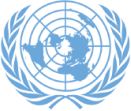Monday, 08 August 2022
Presenter:
Ms. Andrea Lynn Lazaro, Third Secretary to the Philippine Embassy and Permanent Mission in Vienna
Location:
UNHQ Conference Room 4
Thank you, Madam Chair[1],
- I congratulate you on your appointment as Chair of this Committee and assure you of my delegation’s full support.
- We associate ourselves with the statements and substantive recommendations of the Non-Aligned Movement (NAM), Association of Southeast Asian Nations (ASEAN) and the Non-Proliferation and Disarmament Initiative (NPDI) with respect to this Pillar.
- The Philippines asserts our inalienable right to the peaceful uses of nuclear energy – a right which cannot be downgraded to a privilege. At a time when the international community grapples with formidable challenges – COVID-19; climate change, communicable diseases such as Monkeypox, dengue and Ebola, and non-communicable diseases such as cancer; and the fact that we have only eight years left to achieve the ambitious 2030 Sustainable Development Goals – the peaceful uses of nuclear energy offer solutions.
- In the case of COVID-19, imaging techniques allow us to characterize tissue damage, while PCR, genome sequencing and antigen tests will not exist without radiolabeling and isotopic techniques. Irradiation remains an effective method to sterilize PPEs and medical equipment.
- Beyond reaffirming the inalienable right to peaceful uses enshrined in Article IV, this Conference behooves us to celebrate the successes of the NPT and its invaluable contribution to addressing today’s global challenges. We pay tribute to the scientists, the IAEA and the structures that have made progress under Pillar III flourish. The right to peaceful use is as enabling as it is inalienable, for it is key to unlocking new thresholds of sustainable growth and solutions.
- The Philippine experience and vision demonstrate the power of nuclear applications to produce transformative outcomes:
- In food and agriculture: through irradiation, our scientists have developed a carrageenan plant growth promoter that increases crop yield, as well as new plant varieties with disease resistance or stress tolerance. We use isotope techniques to identify toxins in seafood, determine food authenticity, and study malnutrition.
- In health and medicine: we are establishing a Nuclear Medicine Research and Innovation Center to make cancer care more affordable, and are looking into the use of the Sterile Insect Technique to control the population of dengue-transmitting mosquitoes and other insect pests.
- In industrial applications: we use radiation processing to decontaminate and prolong the shelf life of agricultural products and other goods, and in recycling materials and developing novel uses for them.
- In environment and natural resources: we use isotope techniques to characterize our water resources, manage soil, and monitor radioactivity in coral reefs. We are one of the pilot countries under the IAEA’s NUTEC Plastics project to demonstrate the use of nuclear technology for plastic recycling.
- In energy: last February, the Philippines adopted Executive Order 164 which paves the way to include nuclear power in our energy mix. Last June, we recommissioned our research reactor, which will serve as training ground for our future nuclear scientists and engineers.
Madam Chair,
- Developing countries must have access to capacity-building opportunities, through both human resources and institutional development. We appreciate the central role played by the IAEA, through its Technical Cooperation (TC) Programme, in deploying nuclear technology to developing countries. We highlight the need for the TC Programme to have sufficient, assured and predictable resources – an aspiration from the 2010 64-Point Action Plan. We applaud the efforts of the IAEA to promote wider discussions on the salience of nuclear applications on climate change, for climate change requires no less than a collective response.
- We support the development of more robust cooperation frameworks to further promote the peaceful uses of nuclear energy for such purposes while observing the highest standards of nuclear safety and security, in accordance with our responsibilities and legal obligations including the NPT. We remain committed to protecting human health, the environment and society, and in this regard appreciate the IAEA’s technical guidance in the safe and secure use of nuclear technology.
- We take note of the challenges associated with promoting wider recognition of peaceful uses, notably gaining public acceptance and confidence. Towards this goal, we celebrate our Atomic Energy Week every December[2] to develop national consciousness of the benefits of nuclear science, especially among the youth. As we begin developing our nuclear power program[3], we engage stakeholders and listen to their concerns. We encourage frank discussions – including recognizing the harmful effects of ionizing radiation, and how they can be prevented and mitigated through nuclear safety. Nevertheless, we have to be clear and unequivocal that the best way to promote a positive perception of nuclear technology is the total elimination of nuclear weapons once and for all.
Madam Chair,
- The Philippines is pleased to support efforts to improve gender equality and parity in the nuclear field. Our lead agency for peaceful uses, the Philippine Nuclear Research Institute, has been enjoying gender parity for several decades now, including in its top leadership and scientific positions.
- Finally, by harnessing the limitless potential of the atomic nucleus and fostering bilateral, regional and multilateral cooperation in this regard, the peaceful uses of nuclear energy serves as an agent for international peace and security.
Thank you.


